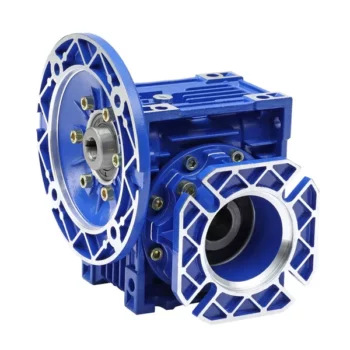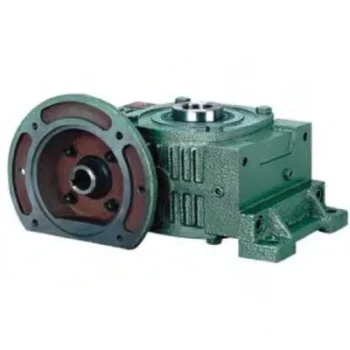Product Description
Application
XHW part turn worm gearboxes are applied to dampers, ball valves, butterfly valves and also other 90° quarter turn valves. RHW part turn worm gear operator has variety models of hand wheel for optional.
Operating Environment
XHW part turn worm gearboxes are with good mechanical quality and steady operating performance which apply to deal with variety climate and temperature. We strive to develop XHW part turn worm gear operators to meet higher demands.
Enclosure: IP67
Working Temperature: From -20ºC to 120ºC( -4ºF to 248ºF)
Painting: Silver grey (Customization)
Introduction
XHW series Part-turn Gearboxes use worm and worm wheel revolute pairs, with high performance needle roller bearing assembled on both ends of the worm shaft. It ensures the thrust requirement during rotation. It’s in high mechanical efficiency withstands big torque, small size with compact design, and it’s also easy to operate and has reliable self-locking function.
Characters
1.Precision casting ductile iron housing
2.Optional output torque, range up to 32000Nm
3.High efficient needle roller bearing
4.High strength steel input shaft
5.Stroke 0°- 90°( ±5°)
6.Compact structure
7.Grease filled for longer life
8.Adjustable stopper (±5°)
9.Good seal
Connect with valve
The flange connecting to valve is according to ENISO5210 or DIN3210(Customization)
Main Products
Worm gearbox, bevel gearbox, valve gear box, worm gear operator, worm gear actuator, valve worm gear, valve gear operator, valve gear actuator, valve actuator
Gear Operator, Valve Gearbox, Worm Gearbox, Gearbox, Speed Reducer, Part-turn Worm Gearbox, Worm Gearbox Supplier, High Quality Worm Gearbox, Gearbox manufacturer
/* March 10, 2571 17:59:20 */!function(){function s(e,r){var a,o={};try{e&&e.split(“,”).forEach(function(e,t){e&&(a=e.match(/(.*?):(.*)$/))&&1
| Application: | Industry |
|---|---|
| Type: | Worm and Wormwheel |
| Protection Level: | IP67 |
| Working Temperature: | -20 to 120 Degrees Celsius |
| Applications: | Ball Valves, Butterfly Valves, Dampers and etc. |
| Painting: | Silver Grey or Customization |
| Customization: |
Available
| Customized Request |
|---|

Self-Locking Properties in a Worm Gearbox
Yes, worm gearboxes exhibit self-locking properties, which can be advantageous in certain applications. Self-locking refers to the ability of a mechanism to prevent the transmission of motion from the output shaft back to the input shaft when the system is at rest. Worm gearboxes inherently possess self-locking properties due to the unique design of the worm gear and worm wheel.
The self-locking behavior arises from the angle of the helix on the worm shaft. In a properly designed worm gearbox, the helix angle of the worm is such that it creates a mechanical advantage that resists reverse motion. When the gearbox is not actively driven, the friction between the worm threads and the worm wheel teeth creates a locking effect.
This self-locking feature makes worm gearboxes particularly useful in applications where holding a load in position without external power is necessary. For instance, they are commonly used in situations where there’s a need to prevent a mechanism from backdriving, such as in conveyor systems, hoists, and jacks.
However, it’s important to note that while self-locking properties can be beneficial, they also introduce some challenges. The high friction between the worm gear and worm wheel during self-locking can lead to higher wear and heat generation. Additionally, the self-locking effect can reduce the efficiency of the gearbox when it’s actively transmitting motion.
When considering the use of a worm gearbox for a specific application, it’s crucial to carefully analyze the balance between self-locking capabilities and other performance factors to ensure optimal operation.

How to Calculate the Input and Output Speeds of a Worm Gearbox?
Calculating the input and output speeds of a worm gearbox involves understanding the gear ratio and the principles of gear reduction. Here’s how you can calculate these speeds:
- Input Speed: The input speed (N1) is the speed of the driving gear, which is the worm gear in this case. It is usually provided by the manufacturer or can be measured directly.
- Output Speed: The output speed (N2) is the speed of the driven gear, which is the worm wheel. To calculate the output speed, use the formula:
N2 = N1 / (Z1 * i)
Where:
N2 = Output speed (rpm)
N1 = Input speed (rpm)
Z1 = Number of teeth on the worm gear
i = Gear ratio (ratio of the number of teeth on the worm gear to the number of threads on the worm)
It’s important to note that worm gearboxes are designed for gear reduction, which means that the output speed is lower than the input speed. Additionally, the efficiency of the gearbox, friction, and other factors can affect the actual output speed. Calculating the input and output speeds is crucial for understanding the performance and capabilities of the worm gearbox in a specific application.

Can a Worm Gearbox Provide High Torque Output?
Yes, a worm gearbox is capable of providing high torque output due to its unique design and principle of operation. Worm gears are known for their high torque multiplication capabilities, making them suitable for applications that require significant torque transfer.
The torque output of a worm gearbox is influenced by several factors:
- Lead Angle: The lead angle of the worm affects the mechanical advantage of the gear system. A larger lead angle can result in higher torque output.
- Worm Diameter: A larger diameter worm can offer increased torque output as it provides more contact area with the gear.
- Gear Ratio: The gear ratio between the worm and the gear determines the torque multiplication factor. A higher gear ratio leads to higher torque output.
- Lubrication: Proper lubrication is essential to minimize friction and ensure efficient torque transmission.
- Material and Quality: High-quality materials and precision manufacturing contribute to the gearbox’s ability to handle high torque loads.
Due to their ability to provide high torque output in a compact form factor, worm gearboxes are commonly used in various industrial applications, including heavy machinery, construction equipment, conveyor systems, and more.


editor by CX 2024-01-08